- Helping you with HIPAA Security Solutions.
Routine Foot Care
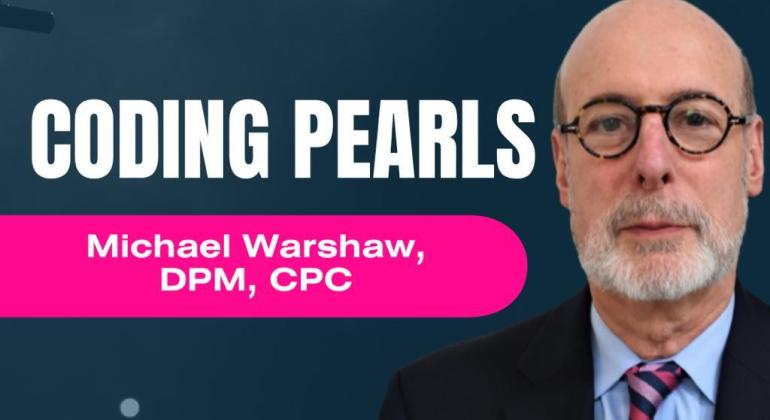
Coding
Coding Pearls - Bundled Services Routine Foot Care
For the “At Risk,” Routine Foot Care patient, can a mycotic toenail be debrided, and a corn/callus be trimmed on the same toe?
Read More
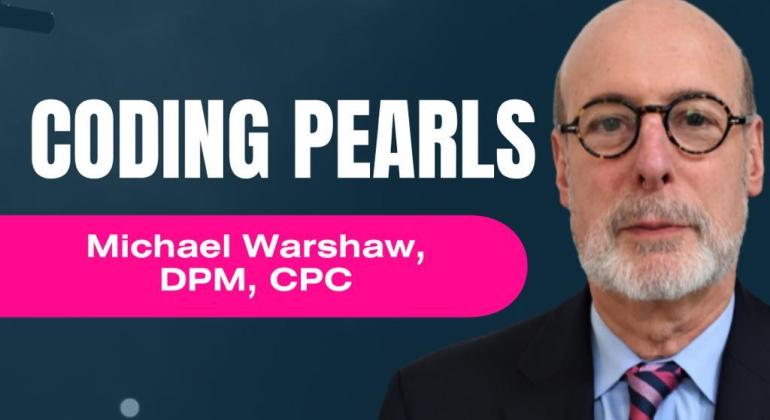
Coding
Coding Pearls - Routine Foot Care and Heel Pain
“I saw an established patient who returned to the office for At Risk,” Routine Foot Care. The patient also had a new complaint of heel pain. I obtained X-rays the foot and gave a steroid injection in the heel. Can I bill for the Routine Foot Care and those treatments as well?”
Read More
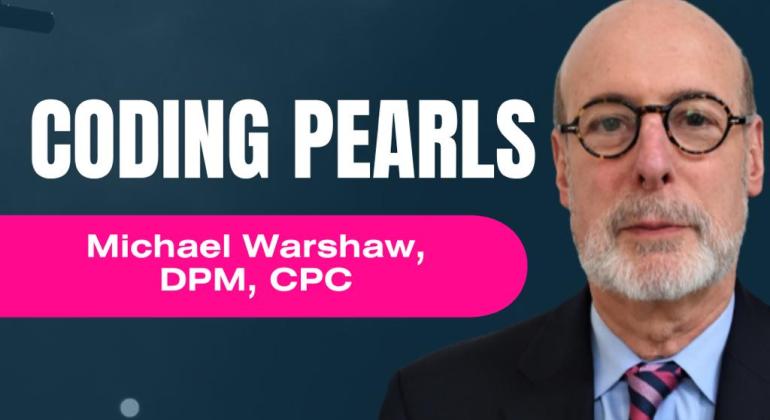
Coding
Issues Billing “At Risk,” Routine Foot Care: Challenges Billing CPT 11057
“How are we supposed to bill CPT 11057 to Medicare to get paid? For the typical patient, we currently use the ICD-10-CM codes E11.42, E11.51, L84, R26.2. We bill this as its own claim. We put the podiatrist as the referring physician. We do not use any modifiers and we previously used the Q8 Modifier when appropriate, but it was denied. What does the proper 1500 form look like for CPT 11057?”
Read More
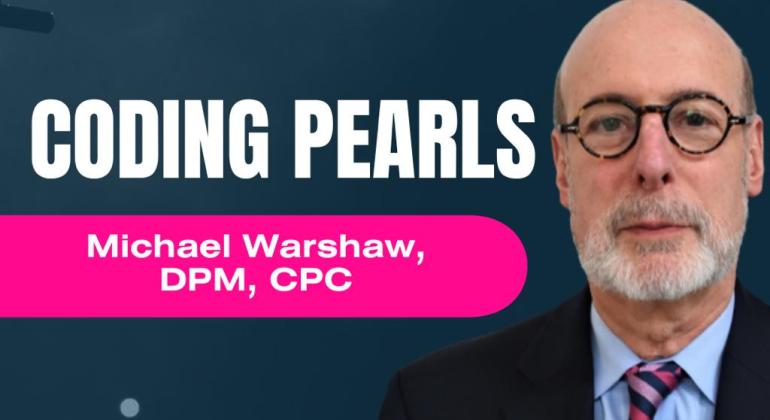
Coding
Routine Foot Care: Response to Bundling
“Medicare sent me a letter about 6 months ago saying I bill CPT 11721 too often compared to CPT 11720 and CPT 11719. However, they consistently deny the combination of CPT 11719 and CPT 11720-59. Not just bundled, but deny both codes, altogether. That then leaves me an outlier with a bunch of CPT 11721 counted and all of the CPT 11719 and CPT 11720 denials left out of the calculations. Appeals are denied (and a waste of time and resources for $11). Their CCI indicator is 1, meaning they can be billed together with 59 or X- modifier on the column 2 code (CPT 11720). Is it fraudulent billing to code only CPT 11720 even though I am debriding 1 to 4 nails and trimming the rest? It also pays more with just CPT 11720 since it is otherwise secondary to a less-than-$11 CPT 11719 code. I hate to turn away these patients who have a true need. Recommendations?”
Read More
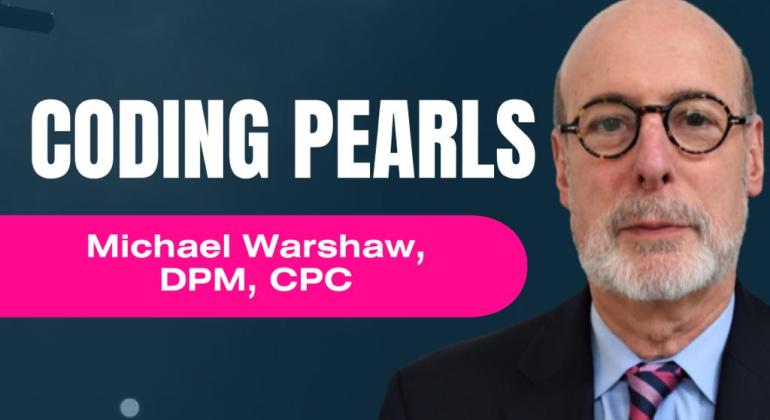
Coding
Routine Foot Care in Nursing Homes
Do I need to have a referral to provide Routine Foot Care to a patient in a Nursing Home?
Read More
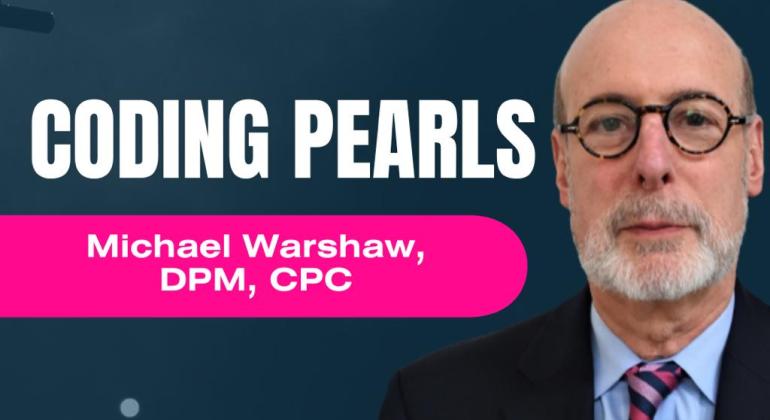
Coding
Routine Foot Care: A Lot of the Same
“I am a young physician and the practice that I am currently at codes almost all routine foot care patients as the following: 1. Tinea ungium B35.1, 2. Peripheral Vascular Disease (PVD) I73.9, 3. Pain in left toe. Documentation is all the same: “All nails are thickened, discolored, and painful with subungual debris” with CPT 11721. Basically, there is no individual nail documentation and all nails are always painful with PVD. This includes younger, disabled patients who present with some thickened nails. I was under the impression that you have to document individual nails and that pain alone is a qualifying diagnosis for nails, if used as the secondary code. My question is: wouldn’t coding only CPT 11721, with pain and PVD to all toes all the time raise red flags?”
Read More
Coding
Mycotic Nail Debridement in the Otherwise Healthy Individual
UNLESS THE FUNGUS INFECTION IN A NAIL REQUIRES DEBRIDEMENT BECAUSE IT CAUSED THE NAIL TO BE ABNORMALLY THICK WHICH RESULTED IN EITHER PAIN OR A SECONDARY INFECTION OR A MARKED LIMITATION OF WALKING, THE TREATMENT SERVICE IS CONSIDERED SIMPLY A NAIL TRIMMING AND IS NOT PAYABLE BY MEDICARE.
Read More
Coding
Treatment of Diabetics with LOPS
Peripheral Neuropathy is the most common factor leading to amputation in people with diabetes. In diabetes, peripheral neuropathy is an anatomically diffuse process primarily affecting sensory and autonomic fibers.
Read More
Coding
What is the Active Care Requirement regarding “At Risk, Routine Foot Care?
What is the Active Care Requirement regarding “At Risk, Routine Foot Care?
Read More
Coding
Routine Foot Care: Cash Clinic
“I am in practice and would like to figure out a different way to contain and manage my routine foot care. It is approximately 15% of my practice. I would like to designate one morning a week as a routine foot care clinic. I am considering making this a cash only clinic: $50 for toenails and $50 for calluses. Is this possible? I am a Medicare provider and have contracts with most insurance companies. I was hoping to model my cash clinic on what some nurses in the area have done. They visit a nursing home and offer residents $25 for routine foot care and do not work with any insurance companies or Medicare. Any thoughts on this cash model, routine foot care clinic would be appreciated.”
Read More

